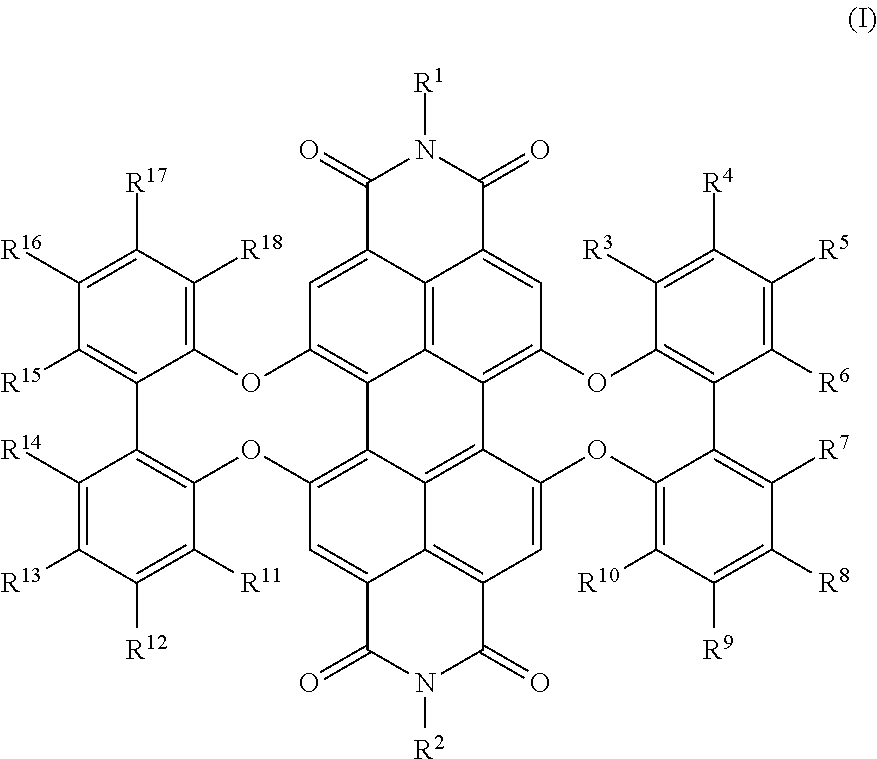Perylene bisimides with rigid 2,2′-biphenoxy bridges
a technology of biphenoxy bridge and perylene bisimide, which is applied in the direction of perinone, ink, anthracene dye, etc., can solve the problems of complex multi-led, inconvenient use, and high cost of multi-led, and achieves severe limitations in the miniaturization of the multi-led
- Summary
- Abstract
- Description
- Claims
- Application Information
AI Technical Summary
Benefits of technology
Problems solved by technology
Method used
Image
Examples
example 1
[0816]
[0817]A mixture of 15 g (17.7 mmol) of N,N′-(2,6-diisopropylphenyl)-1,6,7,12-tetrachloro-perylene-3,4;9,10 diimide, 6.9 g (37.1 mmol) of 2,2′-biphenol, 5.13 g (37.1 mmol) of K2CO3 und 90 mL of N-Methyl-2-pyrrolidone (NMP) were heated at 110° C. for 21 h and then at 140° C. for 24 h. The reaction mixture was allowed to cool to 80° C. followed by adding 90 mL of acetic acid / water (1 / 2) within 60 min under stirring (125 rpm) and subsequently stirring over night. The residue was filtered off and washed with a mixture of 90 mL of ethanol and 20 mL of NMP und then with warm water. The residue was dried to give a crude product (16.81 g). Purification by chromatography affords the title compound. Rf (cyclohexane / ethyl acetate 10:1)=0.1.
Materials Used:
[0818]Polymer 1: transparent polycarbonate based on a polycondensate of bisphenol A and phosgene (Makrolon® 2805 from Bayer MaterialScience AG)[0819]Polymer 2: transparent polystyrene based on a homopolymer of styrene with a density of 10...
PUM
| Property | Measurement | Unit |
|---|---|---|
| color temperatures | aaaaa | aaaaa |
| peak wavelength | aaaaa | aaaaa |
| wavelengths | aaaaa | aaaaa |
Abstract
Description
Claims
Application Information
 Login to View More
Login to View More - R&D
- Intellectual Property
- Life Sciences
- Materials
- Tech Scout
- Unparalleled Data Quality
- Higher Quality Content
- 60% Fewer Hallucinations
Browse by: Latest US Patents, China's latest patents, Technical Efficacy Thesaurus, Application Domain, Technology Topic, Popular Technical Reports.
© 2025 PatSnap. All rights reserved.Legal|Privacy policy|Modern Slavery Act Transparency Statement|Sitemap|About US| Contact US: help@patsnap.com



